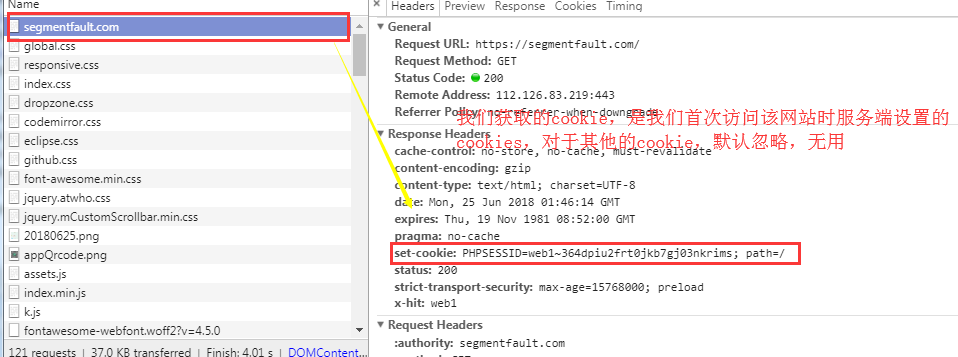python aiohttp的使用详解
1.aiohttp的简单使用(配合asyncio模块)
import asyncio,aiohttp
async def fetch_async(url):
print(url)
async with aiohttp.request("GET",url) as r:
reponse = await r.text(encoding="utf-8") #或者直接await r.read()不编码,直接读取,适合于图像等无法编码文件
print(reponse)
tasks = [fetch_async('http://www.baidu.com/'), fetch_async('http://www.chouti.com/')]
event_loop = asyncio.get_event_loop()
results = event_loop.run_until_complete(asyncio.gather(*tasks))
event_loop.close()
2.发起一个session请求
import asyncio,aiohttp
async def fetch_async(url):
print(url)
async with aiohttp.ClientSession() as session: #协程嵌套,只需要处理最外层协程即可fetch_async
async with session.get(url) as resp:
print(resp.status)
print(await resp.text()) #因为这里使用到了await关键字,实现异步,所有他上面的函数体需要声明为异步async
tasks = [fetch_async('http://www.baidu.com/'), fetch_async('http://www.cnblogs.com/ssyfj/')]
event_loop = asyncio.get_event_loop()
results = event_loop.run_until_complete(asyncio.gather(*tasks))
event_loop.close()
除了上面的get方法外,会话还支持post,put,delete....等
session.put('http://httpbin.org/put', data=b'data')
session.delete('http://httpbin.org/delete')
session.head('http://httpbin.org/get')
session.options('http://httpbin.org/get')
session.patch('http://httpbin.org/patch', data=b'data')
不要为每次的连接都创建一次session,一般情况下只需要创建一个session,然后使用这个session执行所有的请求。
每个session对象,内部包含了一个连接池,并且将会保持连接和连接复用(默认开启)可以加快整体的性能。
3.在url中传递参数(其实与requests模块使用大致相同)
只需要将参数字典,传入params参数中即可[code]import asyncio,aiohttp
import asyncio,aiohttp
async def func1(url,params):
async with aiohttp.ClientSession() as session:
async with session.get(url,params=params) as r:
print(r.url)
print(await r.read())
tasks = [func1('https://www.ckook.com/forum.php',{"gid":6}),]
event_loop = asyncio.get_event_loop()
results = event_loop.run_until_complete(asyncio.gather(*tasks))
event_loop.close()
4.获取响应内容(由于获取响应内容是一个阻塞耗时过程,所以我们使用await实现协程切换)
(1)使用text()方法
async def func1(url,params):
async with aiohttp.ClientSession() as session:
async with session.get(url,params=params) as r:
print(r.url)
print(r.charset) #查看默认编码为utf-8
print(await r.text()) #不编码,则是使用默认编码 使用encoding指定编码
(2)使用read()方法,不进行编码,为字节形式
async def func1(url,params):
async with aiohttp.ClientSession() as session:
async with session.get(url,params=params) as r:
print(r.url)
print(await r.read())
(3)注意:text(),read()方法是把整个响应体读入内存,如果你是获取大量的数据,请考虑使用”字节流“(StreamResponse)
5.特殊响应内容json(和上面一样)
async def func1(url,params):
async with aiohttp.ClientSession() as session:
async with session.get(url,params=params) as r:
print(r.url)
print(r.charset)
print(await r.json()) #可以设置编码,设置处理函数
6.字节流形式获取数据(不像text,read一次获取所有数据)注意:我们获取的session.get()是Response对象,他继承于StreamResponse
async def func1(url,params):
async with aiohttp.ClientSession() as session:
async with session.get(url,params=params) as r:
print(await r.content.read(10)) #读取前10字节
下面字节流形式读取数据,保存文件
async def func1(url,params,filename):
async with aiohttp.ClientSession() as session:
async with session.get(url,params=params) as r:
with open(filename,"wb") as fp:
while True:
chunk = await r.content.read(10)
if not chunk:
break
fp.write(chunk)
tasks = [func1('https://www.ckook.com/forum.php',{"gid":6},"1.html"),]
注意:
async with session.get(url,params=params) as r: #异步上下文管理器 with open(filename,"wb") as fp: #普通上下文管理器
两者的区别:
在于异步上下文管理器中定义了
__aenter__和__aexit__方法

异步上下文管理器指的是在enter和exit方法处能够暂停执行的上下文管理器
为了实现这样的功能,需要加入两个新的方法:__aenter__和__aexit__。这两个方法都要返回一个 awaitable类型的值。
推文:异步上下文管理器async with和异步迭代器async for
7.自定义请求头(和requests一样)
async def func1(url,params,filename):
async with aiohttp.ClientSession() as session:
headers = {'Content-Type':'text/html; charset=utf-8'}
async with session.get(url,params=params,headers=headers) as r:
with open(filename,"wb") as fp:
while True:
chunk = await r.content.read(10)
if not chunk:
break
fp.write(chunk)
8.自定义cookie
注意:对于自定义cookie,我们需要设置在ClientSession(cookies=自定义cookie字典),而不是session.get()中
class ClientSession:
def __init__(self, *, connector=None, loop=None, cookies=None,
headers=None, skip_auto_headers=None,
auth=None, json_serialize=json.dumps,
request_class=ClientRequest, response_class=ClientResponse,
ws_response_class=ClientWebSocketResponse,
version=http.HttpVersion11,
cookie_jar=None, connector_owner=True, raise_for_status=False,
read_timeout=sentinel, conn_timeout=None,
timeout=sentinel,
auto_decompress=True, trust_env=False,
trace_configs=None):
使用:
cookies = {'cookies_are': 'working'}
async with ClientSession(cookies=cookies) as session:
10.获取网站的响应状态码
async with session.get(url) as resp: print(resp.status)
11.查看响应头
resp.headers 来查看响应头,得到的值类型是一个dict:
resp.raw_headers 查看原生的响应头,字节类型
12.查看重定向的响应头(我们此时已经到了新的网址,向之前的网址查看)
resp.history #查看被重定向之前的响应头
13.超时处理
默认的IO操作都有5分钟的响应时间 我们可以通过 timeout 进行重写:
async with session.get('https://github.com', timeout=60) as r:
...
如果 timeout=None 或者 timeout=0 将不进行超时检查,也就是不限时长。
14.ClientSession 用于在多个连接之间(同一网站)共享cookie,请求头等
async def func1():
cookies = {'my_cookie': "my_value"}
async with aiohttp.ClientSession(cookies=cookies) as session:
async with session.get("https://segmentfault.com/q/1010000007987098") as r:
print(session.cookie_jar.filter_cookies("https://segmentfault.com"))
async with session.get("https://segmentfault.com/hottest") as rp:
print(session.cookie_jar.filter_cookies(https://segmentfault.com))
Set-Cookie: PHPSESSID=web2~d8grl63pegika2202s8184ct2q Set-Cookie: my_cookie=my_value Set-Cookie: PHPSESSID=web2~d8grl63pegika2202s8184ct2q Set-Cookie: my_cookie=my_value
我们最好使用session.cookie_jar.filter_cookies()获取网站cookie,不同于requests模块,虽然我们可以使用rp.cookies有可能获取到cookie,但似乎并未获取到所有的cookies。

async def func1():
cookies = {'my_cookie': "my_value"}
async with aiohttp.ClientSession(cookies=cookies) as session:
async with session.get("https://segmentfault.com/q/1010000007987098") as rp:
print(session.cookie_jar.filter_cookies("https://segmentfault.com"))
print(rp.cookies) #Set-Cookie: PHPSESSID=web2~jh3ouqoabvr4e72f87vtherkp6; Domain=segmentfault.com; Path=/ #首次访问会获取网站设置的cookie
async with session.get("https://segmentfault.com/hottest") as rp:
print(session.cookie_jar.filter_cookies("https://segmentfault.com"))
print(rp.cookies) #为空,服务端未设置cookie
async with session.get("https://segmentfault.com/newest") as rp:
print(session.cookie_jar.filter_cookies("https://segmentfault.com"))
print(rp.cookies) #为空,服务端未设置cookie

总结:
当我们使用rp.cookie时,只会获取到当前url下设置的cookie,不会维护整站的cookie
而session.cookie_jar.filter_cookies("https://segmentfault.com")会一直保留这个网站的所有设置cookies,含有我们在会话时设置的cookie,并且会根据响应修改更新cookie。这个才是我们需要的
而我们设置cookie,也是需要在aiohttp.ClientSession(cookies=cookies)中设置
ClientSession 还支持 请求头,keep-alive连接和连接池(connection pooling)
15.cookie的安全性
默认ClientSession使用的是严格模式的 aiohttp.CookieJar. RFC 2109,明确的禁止接受url和ip地址产生的cookie,只能接受 DNS 解析IP产生的cookie。可以通过设置aiohttp.CookieJar 的 unsafe=True 来配置:
jar = aiohttp.CookieJar(unsafe=True) session = aiohttp.ClientSession(cookie_jar=jar)
16.控制同时连接的数量(连接池)
TCPConnector维持链接池,限制并行连接的总量,当池满了,有请求退出再加入新请求
async def func1():
cookies = {'my_cookie': "my_value"}
conn = aiohttp.TCPConnector(limit=2) #默认100,0表示无限
async with aiohttp.ClientSession(cookies=cookies,connector=conn) as session:
for i in range(7,35):
url = "https://www.ckook.com/list-%s-1.html"%i
async with session.get(url) as rp:
print('---------------------------------')
print(rp.status)
限制同时打开限制同时打开连接到同一端点的数量((host, port, is_ssl) 三的倍数),可以通过设置 limit_per_host 参数:
limit_per_host: 同一端点的最大连接数量。同一端点即(host, port, is_ssl)完全相同
conn = aiohttp.TCPConnector(limit_per_host=30)#默认是0
在协程下测试效果不明显
17.自定义域名解析地址
我们可以指定域名服务器的 IP 对我们提供的get或post的url进行解析:
from aiohttp.resolver import AsyncResolver resolver = AsyncResolver(nameservers=["8.8.8.8", "8.8.4.4"]) conn = aiohttp.TCPConnector(resolver=resolver)
18.设置代理
aiohttp支持使用代理来访问网页:
async with aiohttp.ClientSession() as session:
async with session.get("http://python.org",
proxy="http://some.proxy.com") as resp:
print(resp.status)
当然也支持需要授权的页面:
async with aiohttp.ClientSession() as session:
proxy_auth = aiohttp.BasicAuth('user', 'pass') #用户,密码
async with session.get("http://python.org",
proxy="http://some.proxy.com",
proxy_auth=proxy_auth) as resp:
print(resp.status)
或者通过这种方式来验证授权:
session.get("http://python.org",
proxy=http://user:pass@some.proxy.com)
19.post传递数据的方法
(1)模拟表单
payload = {'key1': 'value1', 'key2': 'value2'}
async with session.post('http://httpbin.org/post',
data=payload) as resp:
print(await resp.text())
注意:data=dict的方式post的数据将被转码,和form提交数据是一样的作用,如果你不想被转码,可以直接以字符串的形式 data=str 提交,这样就不会被转码。
(2)post json
payload = {'some': 'data'}
async with session.post(url, data=json.dumps(payload)) as resp:
其实json.dumps(payload)返回的也是一个字符串,只不过这个字符串可以被识别为json格式
(3)post 小文件
url = 'http://httpbin.org/post'
files = {'file': open('report.xls', 'rb')}
await session.post(url, data=files)
url = 'http://httpbin.org/post'
data = FormData()
data.add_field('file',
open('report.xls', 'rb'),
filename='report.xls',
content_type='application/vnd.ms-excel')
await session.post(url, data=data)
如果将文件对象设置为数据参数,aiohttp将自动以字节流的形式发送给服务器。
(4)post 大文件
aiohttp支持多种类型的文件以流媒体的形式上传,所以我们可以在文件未读入内存的情况下发送大文件。
@aiohttp.streamer
def file_sender(writer, file_name=None):
with open(file_name, 'rb') as f:
chunk = f.read(2**16)
while chunk:
yield from writer.write(chunk)
chunk = f.read(2**16)
# Then you can use `file_sender` as a data provider:
async with session.post('http://httpbin.org/post',
data=file_sender(file_name='huge_file')) as resp:
print(await resp.text())
(5)从一个url获取文件后,直接post给另一个url
r = await session.get('http://python.org')
await session.post('http://httpbin.org/post',data=r.content)
(6)post预压缩数据
在通过aiohttp发送前就已经压缩的数据, 调用压缩函数的函数名(通常是deflate 或 zlib)作为content-encoding的值:
async def my_coroutine(session, headers, my_data):
data = zlib.compress(my_data)
headers = {'Content-Encoding': 'deflate'}
async with session.post('http://httpbin.org/post',
data=data,
headers=headers)
pass
以上就是本文的全部内容,希望对大家的学习有所帮助,也希望大家多多支持我们。

